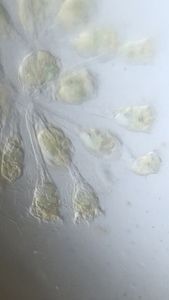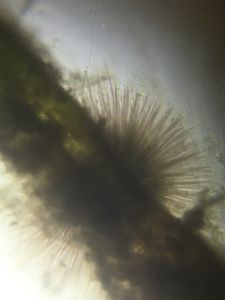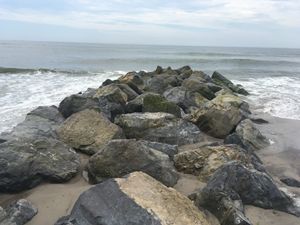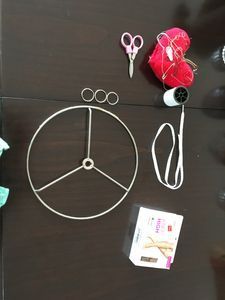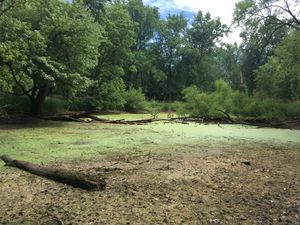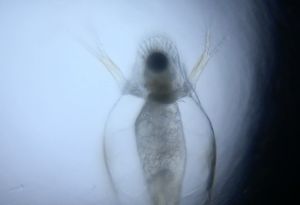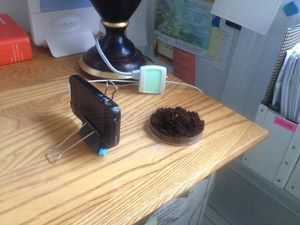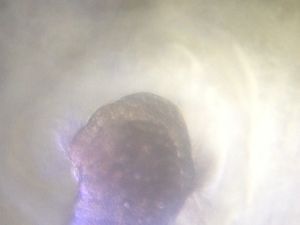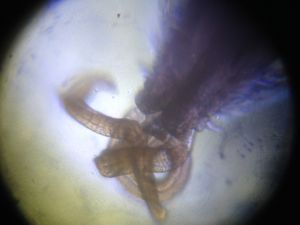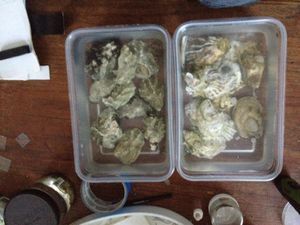Art and Observation at Microscopic Scale
 Jun 09, 2018 • 1:18 PM UTC
Jun 09, 2018 • 1:18 PM UTC Unknown Location
Unknown Location 140x Magnification
140x Magnification Unknown
Unknown
Matthew Rossi
I'm a novelist, essayist, and a writing consultant. I work in the writing centers at Columbia and Baruch University and explore research into the overlap of maker cultures and writing. My work with the Foldscope tends to focus on finding wild creatures in urban spaces and looking at how human works are shaped by the movements of the biosphere.
40posts
105comments
4locations
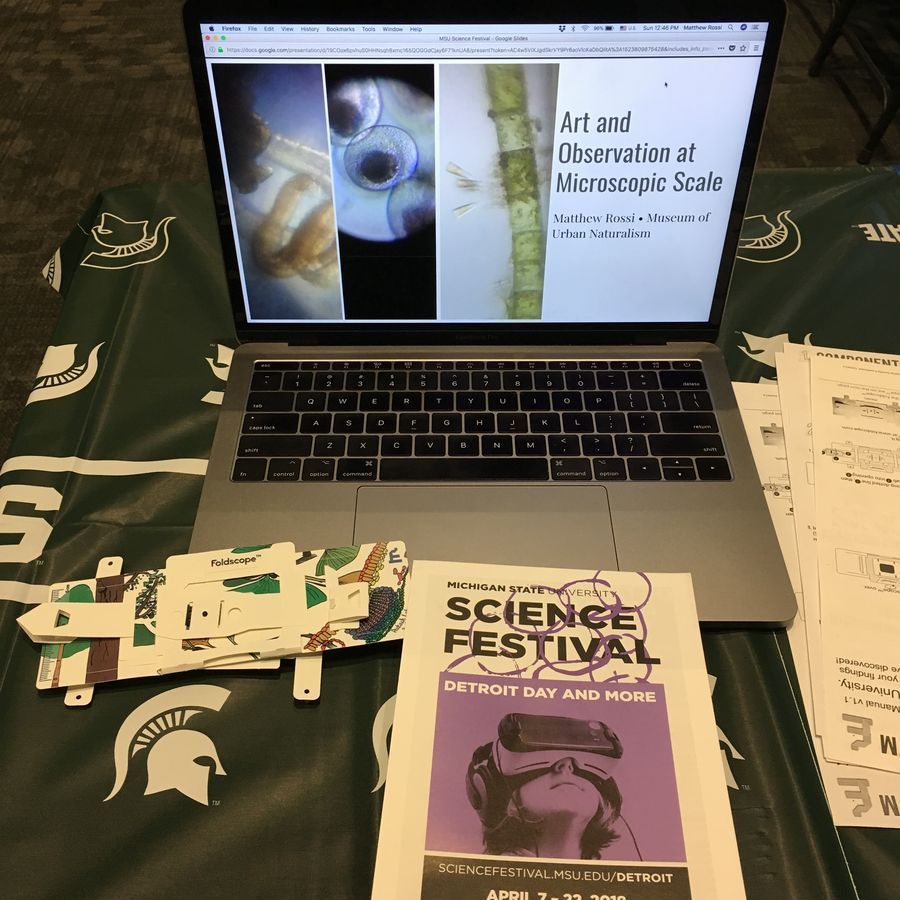
Earlier this spring, Michigan State held its annual Science Festival, which is a multi-week event with lectures and workshops around (what else?) science in the area! As I’ve mentioned before , I’m more of an artist than a scientist, as least in terms of the product of my work as a writer and as the founder of the Museum of Urban Naturalism , but we do the same kinds of things–we look at the world and we ask questions–so this year, I proposed a workshop in using the Foldscope to the MSU Science Fest titled “Art and Observation at Microscopic Scale.” I spoke with Manu and they were generous enough to donate a bunch of the beta-test kits for this purpose.
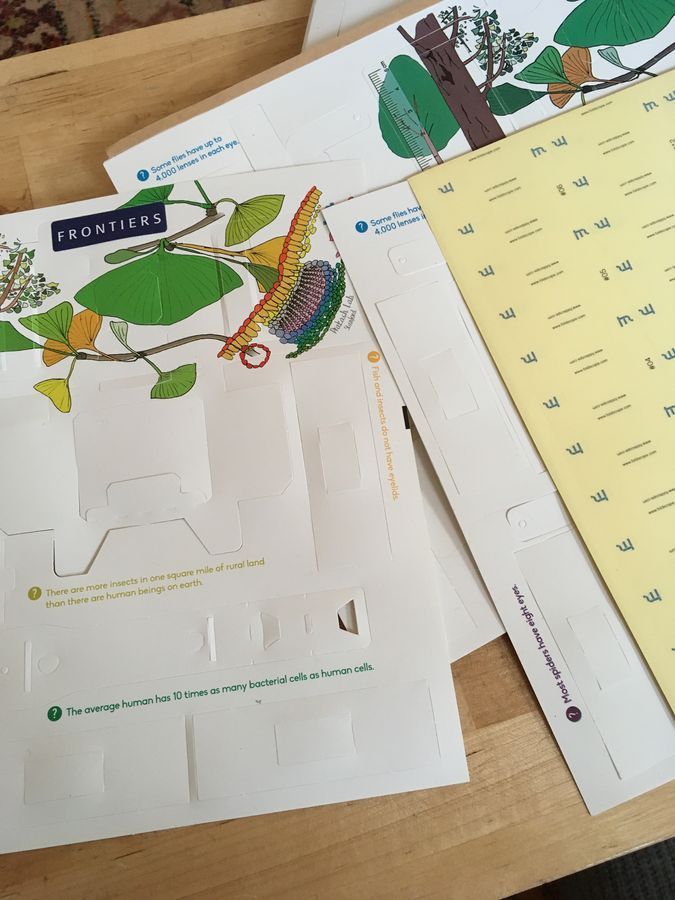
The thinking was we’d show people how to assemble and use some Foldscopes, and then spend a little time making art with them. I figured it would just be turning to spring weather and the families attending would want to go outside and muck about a bit! Who wouldn’t, after all?
Unfortunately, we had to adjust the plan a bit, because in the week of the workshop, the weather looked like this:
Unfortunately, we had to adjust the plan a bit, because in the week of the workshop, the weather looked like this:
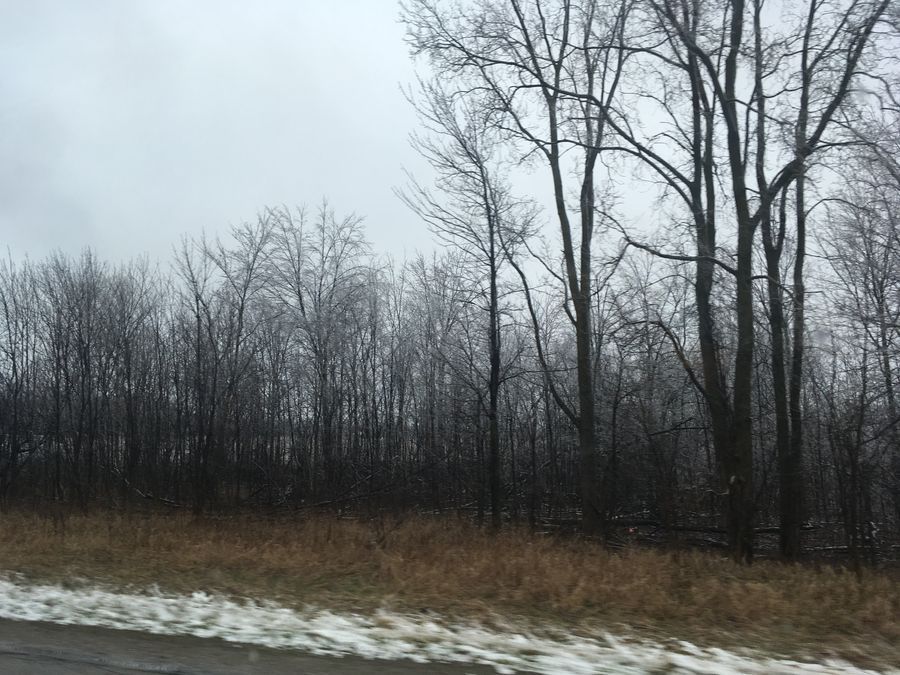
Undeterred, we decided to show people their foldscopes. The night before, we prepared the kits, along with a couple of sample slides so our workshop attendees would have a chance to start exploring as soon as they were done. We chose two classic microscopy slides for to give to our attendees. An onion skin and a basil leaf.
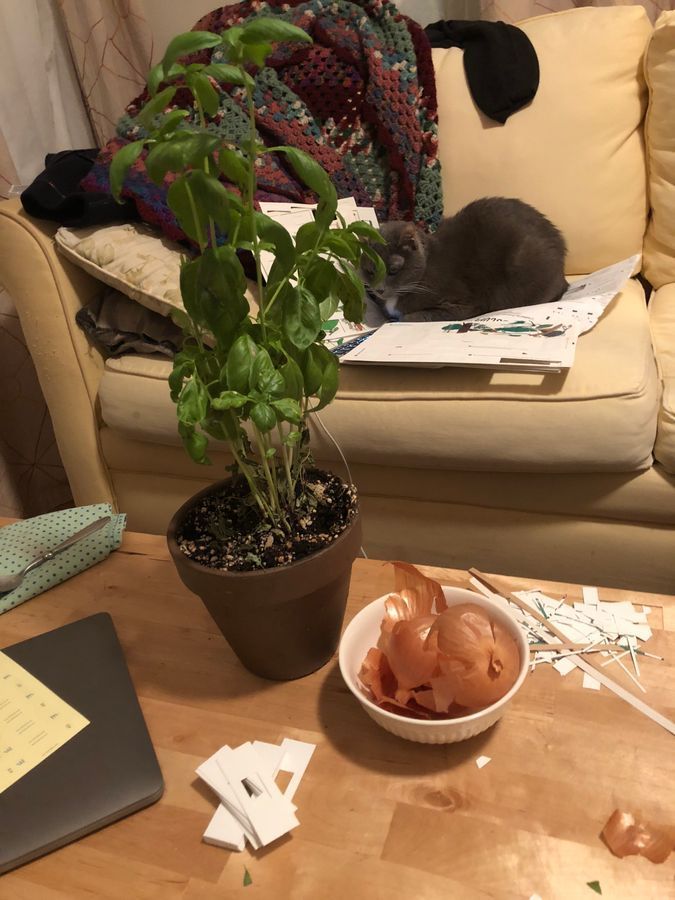
And we had a little help from our furry assistant.

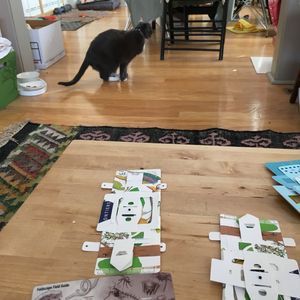
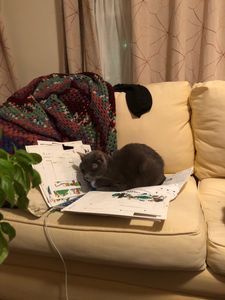
On the day of, we found the exhibition hall packed with people showing kids how to run different experiments, from mycologists to archaeologists, the whole place was full of families with an interest in science and scientists ready to share it with them.
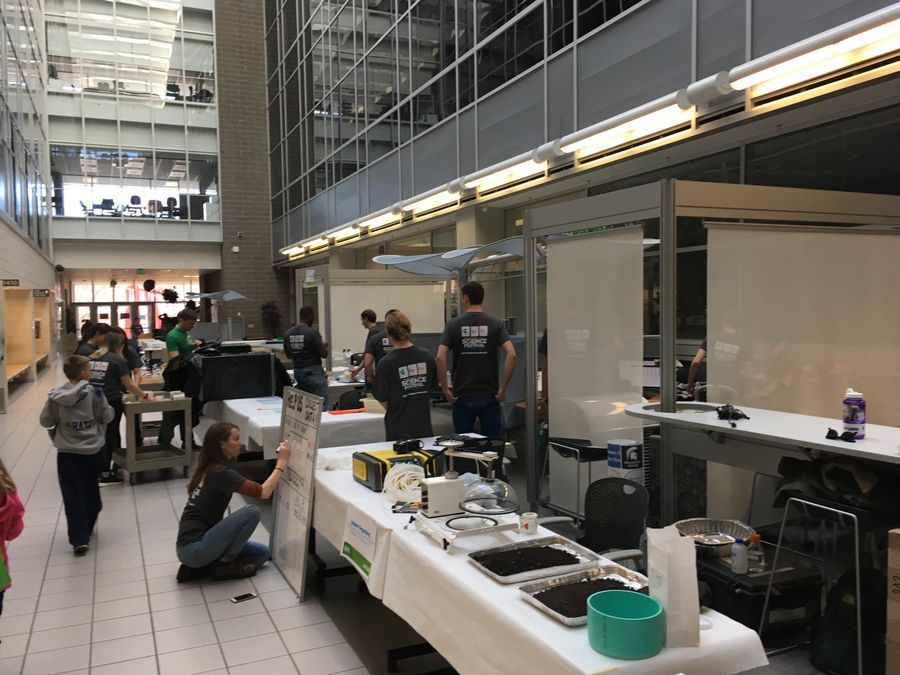
And of course, there was us!
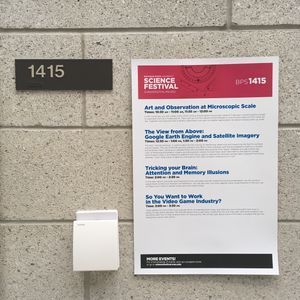
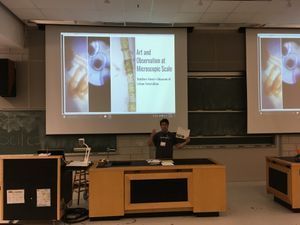
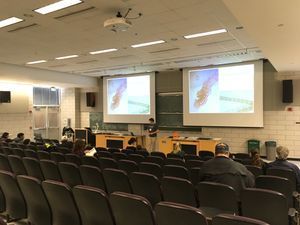
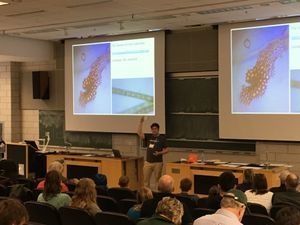
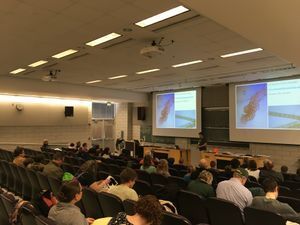
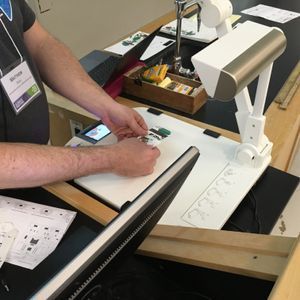
Our audiences grew steadily over the day. On this first workshop day, we taught seventy-five people how to make their Foldscopes and how I use these as a tool for creating art. Thankfully, I had a partner with me to help (and to take these excellent photos).
After our workshop, we walked around and enjoyed some fascinating exhibits on geology and mycology that gave us great ideas for future uses for the scope (petrified wood, anyone?) until a science demonstration set off a smoke alarm and we had to go home.
But this wasn’t our final workshop. The next week, we drove to Detroit to the Dossin Great Lakes Museum on Belle Isle. The weather was even less cooperative than before, so our audience was smaller. But they were still very interested in the Foldscope.
After our workshop, we walked around and enjoyed some fascinating exhibits on geology and mycology that gave us great ideas for future uses for the scope (petrified wood, anyone?) until a science demonstration set off a smoke alarm and we had to go home.
But this wasn’t our final workshop. The next week, we drove to Detroit to the Dossin Great Lakes Museum on Belle Isle. The weather was even less cooperative than before, so our audience was smaller. But they were still very interested in the Foldscope.
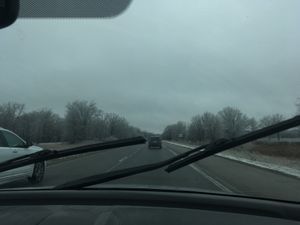
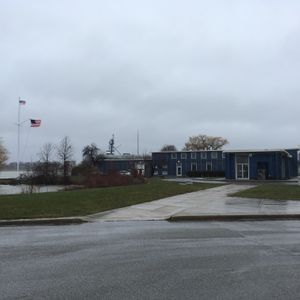
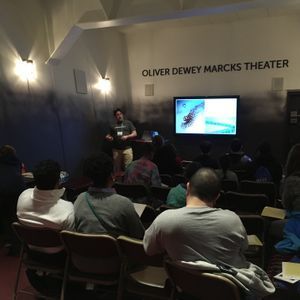
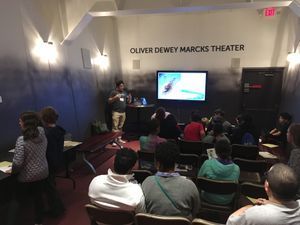
And I have to say, they did an amazing job assembling it. We left this audience with the same challenge as we left the first one with: to go out and make some art using their Foldscopes and share it with us. Easier said than done with the freezing rain, but they seemed game for it.
Finally, since the museum was right across the road, we visited the Belle Isle Aquarium for a nice bit of touristing. The Belle Isle Aquarium is a beautiful, entirely volunteer-run aquarium in Detroit. It’s in an old 1920s building and it feels like walking around an old time gallery of scientific discovery.
Finally, since the museum was right across the road, we visited the Belle Isle Aquarium for a nice bit of touristing. The Belle Isle Aquarium is a beautiful, entirely volunteer-run aquarium in Detroit. It’s in an old 1920s building and it feels like walking around an old time gallery of scientific discovery.
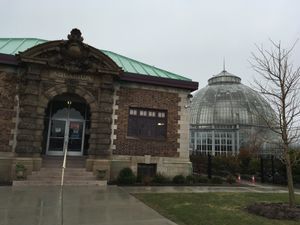
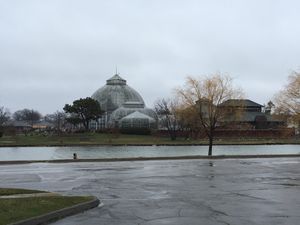
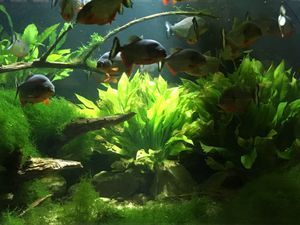
Since I’m always looking for something tiny to look at, I was overjoyed to see some little snails in the water, living as unofficial members of the aquarium alongside their larger peers. I used my Foldscope hand lens to take a closer look.

Finally as we left, we came across some people showing an exhibit of marine lampreys. Marine lampreys are an invasive species and a danger to the fisheries of the Great Lakes, but they’re also kind of a marvel of evolution. They were introduced to the lakes in the 20th century as an entirely marine species, but in less than 20 years after their introduction, they had adapted and turned into a freshwater fish. They’re pretty frightening to look at, but aren’t any danger to people. Just to fish, who they latch onto and then act as parasites of. I took some closeups of their faces, and of their eggs.
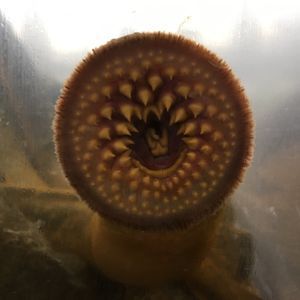


While we were there, the scientist showing the lampreys noted our presenter T-shirts and asked what we were presenting on. We told her “Foldscopes” and she said “Oh! I’ve always wanted one of those!” Apparently a lot of the folks at the Great Lakes Fisheries Conservancy love a good field microscope. Who were we to refuse? We gave her a few kits and lenses and told her to post whatever she found. Hopefully we’ll get a microscopic view of those eggs one day soon.
On the drive home, I kept thinking of what a great thing it is to be able to see the world up close and to be able to share that view with other people. Now that it’s proper summer, I’m looking forward to diving into the ponds (metaphorically) and spending some more time looking at the microcosmos.
On the drive home, I kept thinking of what a great thing it is to be able to see the world up close and to be able to share that view with other people. Now that it’s proper summer, I’m looking forward to diving into the ponds (metaphorically) and spending some more time looking at the microcosmos.
Sign in to commentNobody has commented yet... Share your thoughts with the author and start the discussion!

 0 Applause
0 Applause 0 Comments
0 Comments



